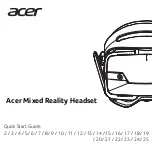
49568IN 15946 REV G
© 2007 TOWING PRODUCTS
49568
49569
49570
For Installation Assistance or Technical Help, Call 1-888-521-0510
INSTALLATION INSTRUCTIONS
Heavy Duty Round Bar Adjustable
Weight Distributing Hitches
PLYMOUTH, MI.
DEALERS:
Give these instructions to your customers.
SIZING WD AND TRAILER HITCH SYSTEMS
1. Refer to provided Consumer Information to weigh loaded trailer tongue to determine proper system size.
2. Chose a system with tongue rating at or above the actual trailer tongue weight
3. Tongue rating of trailer hitch must meet or exceed measured tongue weight of trailer. OEM hitches may not be
rigid enough for tongue weight and may need to be replaced (too much flex and won’t carry load).
4. Total trailer gross weight rating must never exceed tow vehicle rated gross tow rating.
INITIAL SET-UP
1. Line up
tow vehicle and trailer on level pavement,
in straight-ahead position, uncoupled.
2. Level the trailer and measure and record the distance
from the ground to the top of the coupler. (Fig.1).
3. Select a hitch ball with a diameter that matches the
trailer coupler size. The three most common sizes are
1-7/8", 2", and 2-5/16". Select ball with 1-
1/4" or 1“
threaded shank that is V-5 rated equal to or greater than
trailer gross vehicle weight rating (GVWR).
WARNING: Raised balls usually have reduced load
ratings. Ball rating MUST equal or exceed trailer GVWR.
4. Attach hitch ball to the ballmount (A). Standard height hitch balls
with 1-1/4" shanks are supplied with lock washers and nuts (If you must use
a 1” shank ball, use the provided 58184 bushing (B) to reduce hole size in ballmount (A) to 1”). Always use
a lock washer placed between the ballmount and nut. Unless otherwise specified by ball manufacturer torque ball
nut to 450 ft/lbs for 1-1/4" nut, 250 ft/lbs for 1" nut.
5. Some installations may require a longer draw bar (C). Extended bumper guards, pickup truck "caps", or rear mounted spare
tires can limit turn angles unless a longer bar is used. Individual draw bars (C) are available in various sizes.
6. Insert the draw bar (C) into the hitch box and install a pull pin (D) and spring clip (E). Draw bar may be used in either the up
or down position (see Fig. 2).
NOTE:
The ball height should be greater
than the coupler height by approximately 3/4 to 1” (measured in step 2) to
compensate for vehicle squat.
For vehicles with air springs, air shocks or an automatic leveling system, check vehicle owners manual. Unless otherwise
specified, level the trailer with the vehicle loaded as it will be when towing before setting ball height and attaching trailer.
Fig. 1
Fig. 2
Highest Position Lowest Position






















